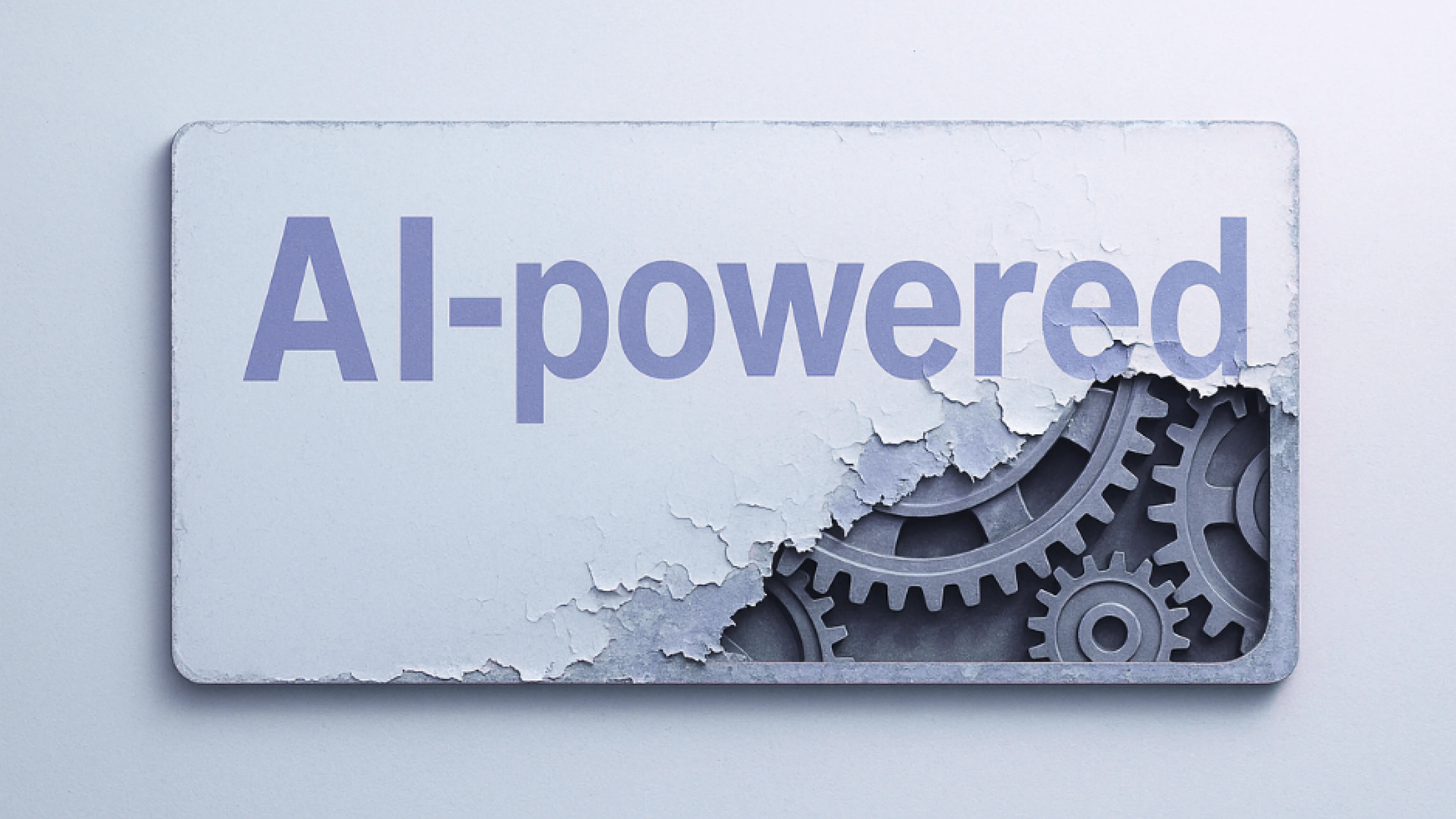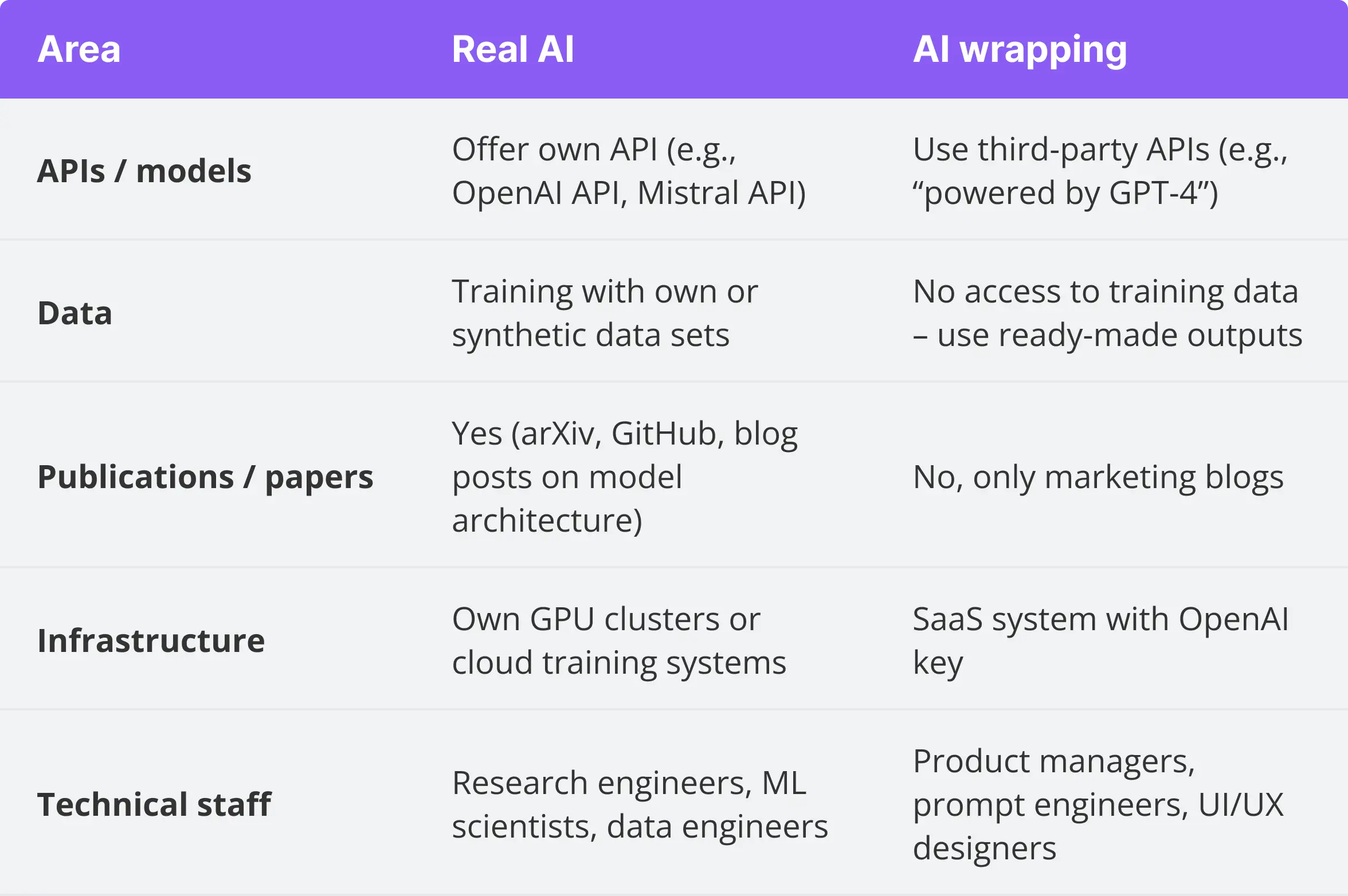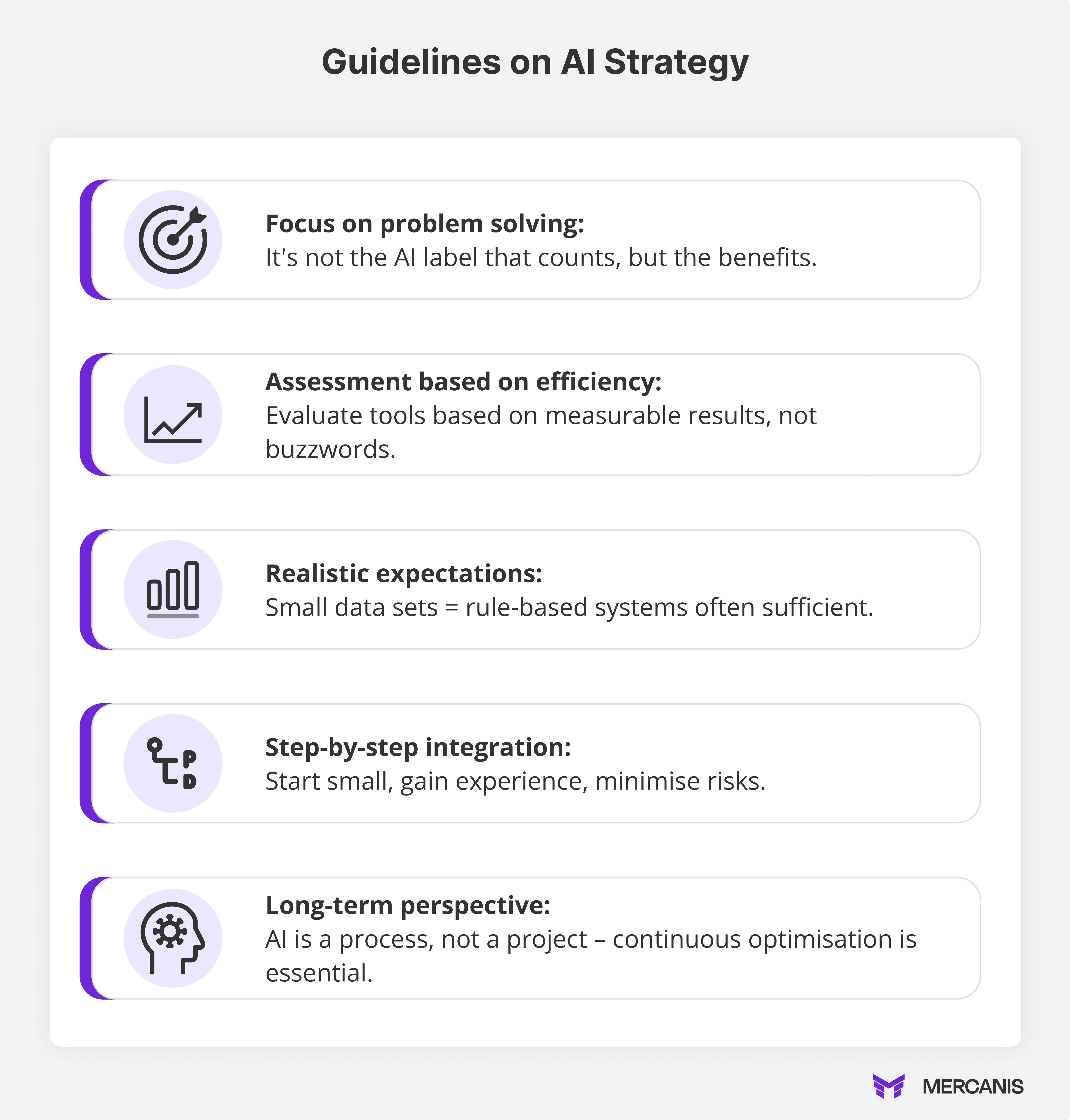
AI washing refers to the misleading use of the term “artificial intelligence” for marketing purposes—without genuine AI technology.
According to a 2019 study by MMC Ventures, 40% of start-ups advertised as “AI companies” do not have genuine AI at the core of their business.
Companies can distinguish real AI from fake AI through transparency, technical documentation, and concrete evidence.
AI washing leads to legal risks, loss of trust, and can be considered misleading advertising under § 5 UWG.
From August 2026, the EU AI Regulation will impose extensive transparency requirements, with heavy fines for violations.
In a world where almost every product is advertised as “AI-powered” or “intelligent,” it is more difficult than ever to distinguish real artificial intelligence from clever marketing. AI washing has become a widespread phenomenon that costs investors millions and misleads consumers.
A study by MMC Ventures (2019) analyzed 2,830 European startups that presented themselves as “AI startups.” The result: 40% did not use real AI, but relied on simple automation or classic software tools.
AI washing is the “greenwashing” of the technology industry, a deliberate or negligent practice in which companies exaggerate, distort, or invent the use or capabilities of artificial intelligence in their products, services, or processes.
According to Article 3(1) of the EU AI Regulation, genuine AI systems must be machine-assisted, autonomous, adaptable, and capable of influencing their environment. This clear definition helps to distinguish genuine AI from rule-based algorithms that merely execute pre-programmed “if-then” rules.
The term emerged in response to the AI hype since 2018, particularly through generative AI such as ChatGPT. APIs from major providers make it technically easier to superficially integrate AI components into existing products. This results in so-called “AI wrappers,” which usually only offer superficial features without substantially advancing the product.
This topic is particularly relevant in purchasing, as AI offers real savings potential, but only if it is genuine technology and not a sham solution.
Genuine AI companies are transparent about their technology. Ask for specific technical documentation and white papers. Reputable providers openly explain their algorithms, training methods, and AI functions.
Warning signs:
Positive examples: Companies such as Mercanis document their AI applications in concrete terms and explain in detail which machine learning methods they use.
The fundamental difference lies in the ability to learn. True AI uses machine learning and continuously improves through data analysis. Rule-based systems, on the other hand, only follow pre-programmed rules.
Key questions:
.webp)
True AI requires large, high-quality data sets. Without substantial data, effective machine learning is not possible.
Critical questions:
An example: A spend management system with €250 million in data volume enables true AI-powered predictions. If companies do not provide specific information about training data, you should be skeptical.
Demand measurable success stories and concrete use cases. True AI shows quantifiable improvements in practice.
Verifiable results:
Consult IT or AI experts for an informed assessment. Technical due diligence can reliably expose AI washing.
Possible validation sources:

This table illustrates how to distinguish genuine AI providers from those who merely “package” existing AI models and market them as their own solution. For a well-founded evaluation, it is important to consider these aspects when analyzing providers.
Critically questioning AI claims is essential for companies, investors, and consumers. The consequences of uncritical trust are far-reaching:
Genuine AI offers enormous potential for companies of all sizes. When used correctly, it creates measurable benefits and revolutionary opportunities.
Examples:
The future lies in augmented procurement—the intelligent combination of human expertise and AI support.
Negative examples (AI washing):
Positive examples (real AI):
The legal framework is becoming increasingly stringent.
Recommendation: Companies should review their communications, disclose AI components transparently, and establish a proactive compliance strategy.
The successful use of AI does not begin with big promises, but with clear principles. The decisive factor is not whether AI is used, but how effectively it solves problems, creates added value, and is integrated in the long term. The following guidelines help to use AI pragmatically, efficiently, and sustainably.

AI washing poses a serious challenge for companies, customers, and investors. The misleading use of the term “artificial intelligence” can not only undermine confidence in genuine AI technologies, but also lead to legal risks and economic disadvantages. In purchasing and procurement in particular, it is crucial to distinguish genuine AI solutions from marketing hype in order to actually reap the many benefits, such as automation, improved decision-making, and risk minimization.
When introducing AI systems, companies should therefore pay attention to transparency, technical documentation, and concrete evidence. Integrating AI tools into existing procurement processes requires careful planning, employee training, and ensuring data protection and data quality. Only in this way can the potential of AI in purchasing be fully exploited and sustainable competitive advantages achieved.
Ultimately, the focus should always be on the actual benefits and the solution of specific tasks – not on mere AI advertising. In this way, companies can avoid AI washing and build trust with customers, authorities, and partners, while at the same time driving forward the digitalization and automation of their procurement processes.

Ask for specific examples and measurable results. Genuine providers can explain how their system learns and improves. Be skeptical of vague terms such as “intelligent” or “smart” without explanation.

Companies risk injunctive relief and claims for damages under Section 5 of the German Unfair Competition Act (UWG). From 2026, fines of up to 7% of annual turnover may be imposed under the EU AI Regulation.

FinTech, e-commerce, marketing tools, and consumer electronics are most susceptible to exaggerated AI claims.

Perform technical due diligence. Check whether genuine machine learning methods are being used. Demand real-world use cases and experienced AI teams.

AI washing concerns technology claims, greenwashing concerns environmental claims. Both use exaggerations and vague terms – both undermine trust in genuine innovations.




